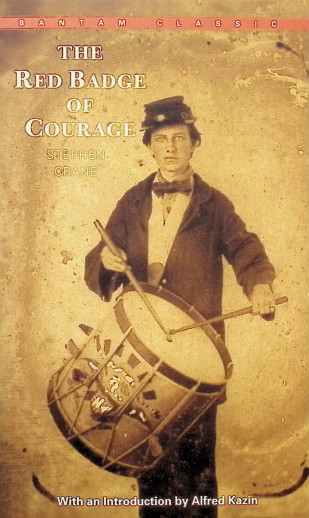We use cookies to make your experience better. To comply with the new e-Privacy directive, we need to ask for your consent to set the cookies. Learn more.
The Red Badge of Courage by Stephen Crane
First published in 1895, America's greatest novel of the Civil War was written before 21-year-old Stephen Crane had "smelled even the powder of a sham battle." But this powerful psychological study of a young soldier's struggle with the horrors, both within and without, that war strikes the reader with its undeniable realism and with its masterful descriptions of the moment-by-moment riot of emotions felt by me under fire. Ernest Hemingway called the novel an American classic, and Crane's genius is as much apparent in his sharp, colorful prose as in his ironic portrayal of an episode of war so intense, so immediate, so real that the terror of battle becomes our own … in a masterpiece so unique that many believe modern American fiction began with Stephen Crane.
This is the second year of a two year program in American Literature. The author, Jil Dixon, chose to divide American Lit into two years instead of the typical one in order to provide more thorough author/works coverage, noting that many of these works provide excellent vehicles for the introductory literature and composition skills usually found in first year high school courses. Interestingly, there is enough background research required that each course can also be counted as a 1/4 credit in American history.
The course is organized into 34 weekly study units which include one or more literature selections. The two remaining weeks are reserved for review and tests. Each selections study includes author/setting background information (student researches); a "Words to Know" section that requires the student to determine the part of speech, provide synonyms, and use in sentences; and questions for both literary analysis and critical reading. Each week the student is challenged to "make it real." For instance: "Think of two examples of foils in literature or movies" or "Name at least one stereotype or stock character that Irving portrays in Rip Van Winkle." Writing assignments are also part of each weeks study. As previously mentioned, these are typically coordinated with Write with the Best. There is also a weekly "culminating activity". These activities vary greatly but tend to be more hands-on and often something that will be more meaningful and fun if done in a group. Vocabulary and Literary Terms Tests are given every six weeks.
The Student Worktext is consumable and designed to provide both an excellent study tool and comprehensive test-prep review material. Introductory material and a weekly schedule (in the form of a checklist) communicate to the student the courses independent study nature. Writing space for all assignments is provided although some students may prefer to complete the composition assignments on the computer.
The Teachers Edition is essentially a full-text answer key but also includes vocabulary and literary terms test masters (reproducible for family) along with their answer keys. There is also a research paper checklist that can be reproduced for the student.
Required resources: Many of the literature selections can be found for free online. If you prefer a print resource, most of them are available in the second volume of The Norton Anthology of American Literature Shorter 9th Ed. Although the Shorter 7th Edition is recommended in the introduction to the course, this is now out of print. Most of the literature selections used in the program are available in the Shorter 9th edition with these exceptions:
- Walt Whitman: "Oh Captain! My Captain!" and "I Hear America Singing"
- Edith Wharton: "April Showers"
- Edwin Arlington Robinson: Mr. Flood's Party
- Edna St. Vincent Millay: Recuerdo, Apostrophe to Man, I Forgot for a Moment
- Ernest Hemingway: "The Big Two-Hearted River"
- John Steinbeck: "The Leader of the People"
- Eudora Welty: "A Worn Path"
The full-length works studied in this volume are: The Red Badge of Courage, Autobiography of an Ex-Colored Man, The Crucible and Our Town. You will also need these books to complete the assignments.
Other required resources used in this program include: Write with the Best Volume 2 (#019034), The American Heritage Dictionary and Thesaurus (#035790), Writing a Research Paper: A Step by Step Approach (#054413), and Writing a Research Paper Teachers Edition (#054414).
| Product Format: | Softcover Book |
|---|---|
| Grades: | 9-12 |
| Brand: | Bantam, Doubleday and Dell |
| Author: | Stephen Crane |
| ISBN: | 9780553210118 |
| Length in Inches: | 7 |
| Width in Inches: | 4 |
| Height in Inches: | 0.5 |
| Weight in Pounds: | 0.2 |
| Ages: | 12 - 17 |
| Introduced by: | Alfred Kazin |
| Pages: | 160 |
Be the first to review this item


Bought 3 different cover versions of this book for my boys to read for school.
My 12th grade son enjoys war books, and this book tackles weighty issues in that context,
High school required
High School Lit class